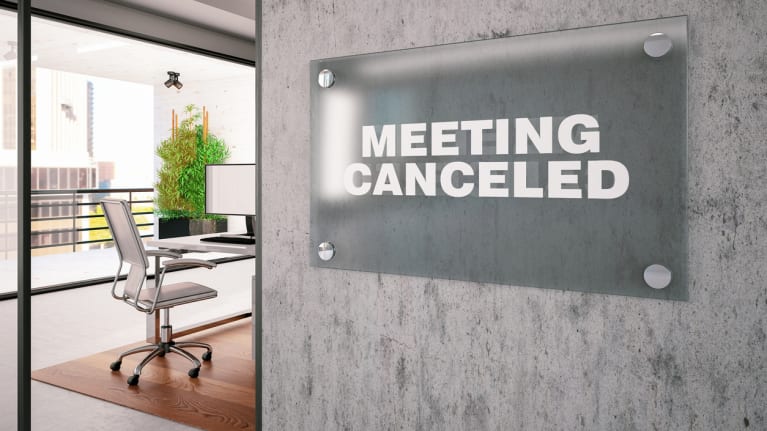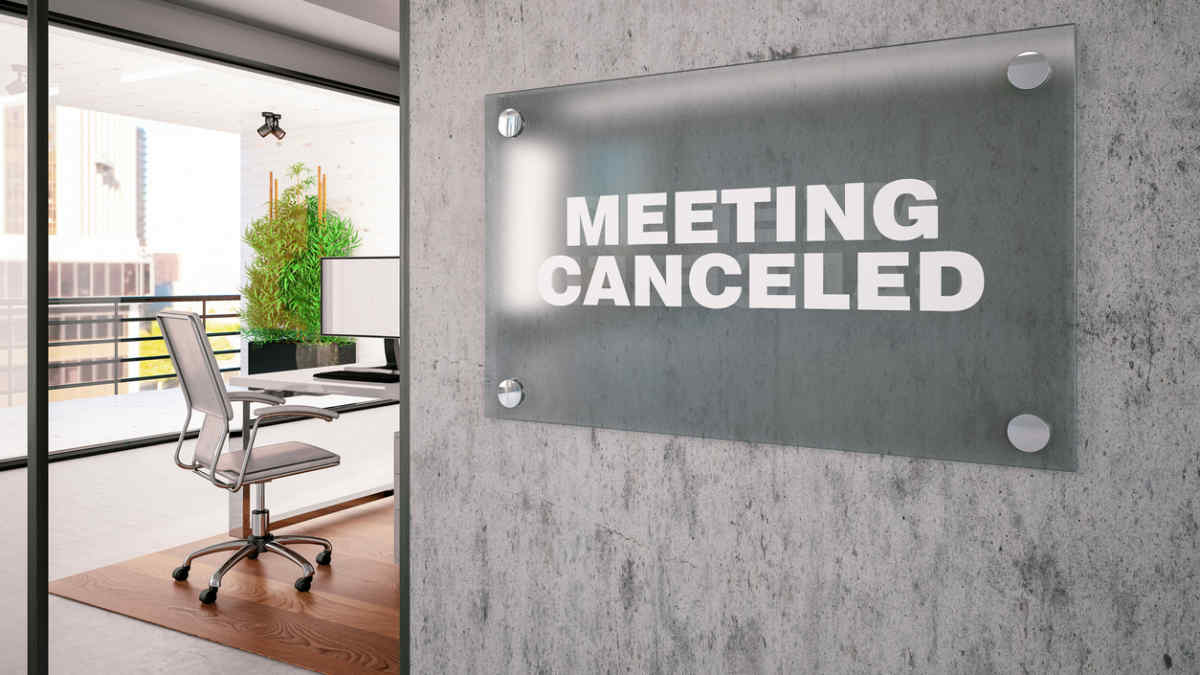

?Shopify’s announcement that it will eliminate many recurring meetings is the latest example of companies looking for ways to boost productivity and efficiency.
The tech company is canceling recurring meetings involving three or more people. Meetings can go back onto calendars after a “two-week cooling-off period” but only if they have great value. Wednesdays will be meeting-free; those with more than 50 attendees will be limited to Thursdays.
“Let’s give people back their maker time,” said Kaz Nejatian, Shopify’s chief operating officer and vice president of product, in a Jan. 3 tweet about the change. “Companies are for builders. Not managers.”
A 2022 report, The Cost of Unnecessary Meeting Attendance, found employees, on average, have 17.7 meetings per week for a total of 18 hours. Employees indicated only about 12 hours of weekly meetings were critical for them to attend and nearly six hours of meetings could have been skipped as long as they were “kept in the loop” about what transpired. The most common type of meeting employees viewed as “skippable” were ones led by a leader not in their department or team.
The findings are based on research by Steven G. Rogelberg, professor of organizational science management at the University of North Carolina at Charlotte, in partnership with software maker Otter.ai. Rogelberg is the author of The Surprising Science of Meetings: How You Can Lead Your Team to Peak Performance (Oxford University Press, 2019).
In an interview with Canadian journalist Robyn Bresnahan, Rogelberg commended Shopify for trying to improve how it approaches meetings but expressed concern about such a wholesale approach. He likened it to making a New Year’s resolution without addressing ways to make the resolution successful.
The goal should not be to eliminate meetings, he said, but “to eliminate bad meetings and wasted time in meetings.”
“The hard stuff,” he noted, “is actually fundamentally changing the ecosystem such that meetings truly work for you. And there is research that demonstrates those organizations that have more effective meetings, they are more profitable.”
Reducing the number of unnecessary meetings employees are expected to attend can save organizations money, according to Rogelberg’s report. Organizations with 100 employees could save nearly $2.5 million annually.
Fewer meetings give employees more time to perform their tasks: 86 percent of the 632 U.S. workers surveyed said they work more effectively when they have longer, uninterrupted periods of time.
Evaluate Why You’re Meeting
Absolute rules such as Shopify is establishing “may make temporary sense as part of a reckoning,” observed Adam Riggs, CEO of Frameable, a business-to-business software-as-a-service company based in New York City.
“But in the long run a company’s culture of collaboration is shaped by what percentage of the time these interactions lead to a better result, and why or why not,” he said.
“Meeting ‘hygiene’ is much more than meeting size and frequency,” Riggs added. “Are they always scheduled? Unscheduled interactions are a key part of healthy collaboration. Are working sessions and brainstorming sessions treated the same as status updates?”
Cutting back on meetings can demonstrate to employees that their leaders want to be considerate of their time and put their skills to the best use, said Christopher Pappas, founder of publishing platform eLearningIndustry in Reno, Nev.
“To prevent burnout, workers need flexibility throughout their day. When employees are bogged down by meetings, they not only feel drained of energy and creativity, but they are left with less time to complete their responsibilities effectively.”
His organization employs about 35 individuals, most of whom work remotely, and Pappas said there were many instances where meetings were characterized as “going through the motions” rather than as a meaningful exchange of ideas. Some changes it made:
- Scheduling extra meetings only when normal communication channels are exhausted.
- Experimenting with different formats, such as stand-up meetings that typically last 10 to 15 minutes.
- Making sure meetings have a clear agenda, preferably with one problem to be solved, and sharing the agenda in advance.
The company made this change, he said, “after finding that long lists of items in meetings were causing an issue where people were forced to attend an hour meeting for their relevant five-minute period.” And having an agenda in advance “enables attendees to prepare beforehand and feel a sense of promise that progress will be made.”
- Recognizing it’s OK for a meeting to end early once the objective is reached and to avoid bringing up new items “since we have everyone here.”
- Replace long Zoom meetings with Slack messages when possible.
- Canceling team meetings or those that have a standing date when there is no reason to meet or an update to be made.
Month-Long Experiment
Software company TechSmith’s 300 employees were all working remotely last year while their new headquarters in East Lansing, Mich., was under construction. After workers asked for fewer, better meetings, the company instituted a month-long experiment of no meetings during July.
During that time, workers pivoted from synchronous communication—team members meeting via video, phone, in-person or immediately responding on group chat or e-mail—to asynchronous communication that used only writing or prerecorded video that employees responded to on their own schedule.
There were ground rules: Business-critical interactions, such as hiring interviews and vendor engagements, were not affected. Individuals had to schedule uninterrupted “think time” and keep asynchronous e-mails and videos short and direct. Teams had to have a communications plan that was clear on when and if responses were needed.
TechSmith learned that meetings matter when used critically.
“Meetings are an undeniable necessity; they provide significant—and meaningful—opportunities for individual interactions and collaborative problem solving,” the company noted in the report, A Month with No Meetings: An Experiment to Build an Async-First Culture, released Jan. 11.
The biggest benefits, employees said in a post-experiment survey, were time savings and increased productivity while still being able to share information. Employees also reported feeling 15 percent more productive and thinking more critically about how they use meetings (8 percent). It also has led 85 percent of employees to consider adopting other ways for communicating.
TechSmith didn’t expect synchronous meetings to vanish once the experiment concluded, the report noted: “The number of regular meetings continues to vary widely across individual roles. Interaction preferences remain unique to each team. What matters is that communication evolves through a constant, iterative, and collaborative process.”
Involve employees “to make big changes for them, both individually and as a whole,” TechSmith advises, because what works for one worker or team won’t for another.
“Get the right people together at the right times but protect time for deep-focus work,” the report noted. “Support relationship-building through personal interactions. Clearly communicate responsibilities, next steps, and realistic expectations,” and invest in the right communication tools.

